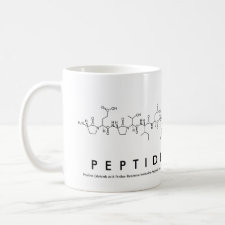
Authors: Yang YZ, Zhang Y, Li S, Liu XG, Xu BS
Article Title: Grafting molecularly imprinted poly(2-acrylamido-2-methylpropanesulfonic acid) onto the surface of carbon microspheres.
Publication date: 2012
Journal: Applied Surface Science
Volume: 258
Issue: (17)
Page numbers: 6441-6450.
DOI: 10.1016/j.apsusc.2012.03.058
Alternative URL: http://www.sciencedirect.com/science/article/pii/S0169433212004849
Abstract: Poly(2-acrylamido-2-methylpropanesulfonic acid) (PAMPS) was grafted on the surface of carbon microspheres (CMSs), which were modified in prior by a mixed acid (HNO3 and H2SO4) oxidation and 3-methacryloxypropyl trimethoxysilane silanization. Then, the molecularly imprinting polymerization was carried out towards the macromolecule PAMPS grafted on the surface of CMSs using dibenzothiophene (DBT) as template, ethylene dimethacrylate as cross-linking agent and (NH4)2S2O8 (APS) as initiator to prepare surface molecularly imprinted polymer (MIP-PAMPS/CMSs) for adsorbing DBT. The optimized conditions of grafting PAMPS, including AMPS dosage, APS content, reaction temperature and reaction time, were emphasized in this paper. The morphology of the samples was characterized by field emission scanning electron microscopy. The functional groups were analyzed qualitatively by Fourier transform infrared spectrometry. The grafting degree of PAMPS was investigated by thermogravimetry. The results show that the preferable AMPS dosage, APS content, reaction temperature and time were 5 g, 0.15 g, 70 °C and 12 h, respectively, for preparing PAMPS/CMSs composite on the basis of 1.0 g of silanized-CMSs. The absorbing characteristic of MIP-PAMPS/CMSs toward DBT was studied preliminarily with dynamic adsorption. In the experiment of dynamic adsorption, MIP-PAMPS/CMSs and non-imprinted polymer (NIP-PAMPS/CMSs) were compared with respect to their rapid adsorption in 1 mmol/L of DBT solution in n-hexane. When the first 1 mL of 1 mmol/L DBT solution was injected and flowed through a column packed with 0.1 g of MIP-PAMPS/CMSs, the content of DBT reduced to 0.265 mmol/L, that is, decreased significantly from 279 to 74 ppm. When 3 mL of DBT solution was flowed through the packed column, the adsorption of MIP-PAMPS/CMSs toward DBT reached saturation with the maximum adsorption amount of 1.38 x 10-2 mmol/g and the overall adsorption efficiency of 46%, while NIP-PAMPS/CMSs adsorbed only 1.66 x 10-3 mmol/g of DBT. It is suggested that the MIP-PAMPS/CMSs had much better adsorption property towards DBT than NIP-PAMPS/CMSs
Template and target information: dibenzothiophene, DBT
Author keywords: 2-Acrylamido-2-methylpropanesulfonic acid, grafting, Carbon microspheres, surface molecularly imprinted polymer, adsorption



Join the Society for Molecular Imprinting

New items RSS feed
Sign-up for e-mail updates:
Choose between receiving an occasional newsletter or more frequent e-mail alerts.
Click here to go to the sign-up page.
Is your name elemental or peptidic? Enter your name and find out by clicking either of the buttons below!
Other products you may like:
 MIPdatabase
MIPdatabase









